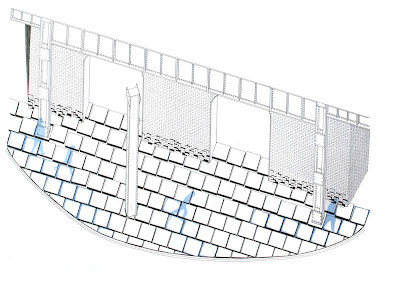During my visit to South Bank I was immediately attracted to the broad display of street art: the performers posing to the public, musicians, skate park with its colourful graffiti and youth using it as well as the sculptures lining the riverside walk. This art is more direct and accessible to public as opposed to enclosed in gallery spaces, theatres and concert halls. It prompts visitors response and engages them, whether they visit the site to enjoy it or just to have a stroll along the river.The tourists will pose with the performers, listen to the music, watch skaters perform their tricks and take pictures next to the sculptures.

The Arena sculpture, most architectural of the works of art along South Bank, though, triggers the most direct response. Depending on time of the day there are kids running on it trying to keep balance on the curved surface or students sitting there enjoying their lunch - people not only watch it or pose next to it but actually utilise the sculpture for their enjoyment. Without as much as noticing it as a work of art they engage with it. Perhaps they see it as a more fancy bench, the same giving it a new purpose.
The sculpture was created in 1983-88 by a British sculptor John Maine for the Sculpture Show, commissioned by South Bank Centre. Arena, a large broken circle of stone blocks does not immediately appear as a work of art, more like an integral part of the area. This is no coincidence: Maine's works, many of then being outdoor sculptures, show strong links to landscape and architecture and are integral parts of their sites such as another of his sculptures designed for the Winchester Cathedral:









